|
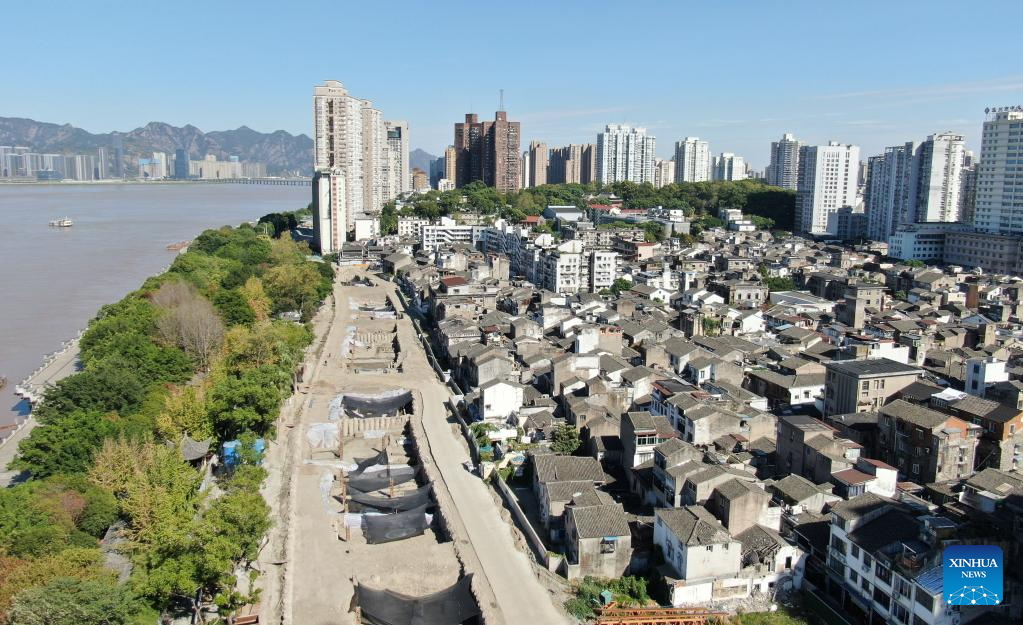
Aerial photo taken on Oct. 10, 2022 shows a view of the archaeological site of Shuomen ancient port along the Oujiang River in Wenzhou, east China's Zhejiang Province. The archaeological site of Shuomen ancient port was discovered at the end of 2021, with ruins of ancient buildings, shipwrecks, and porcelain pieces unearthed in the following archaeological excavations. According to the National Cultural Heritage Administration, the discovery is important to studies of the ancient Maritime Silk Road. (Xinhua/Weng Xinyang) 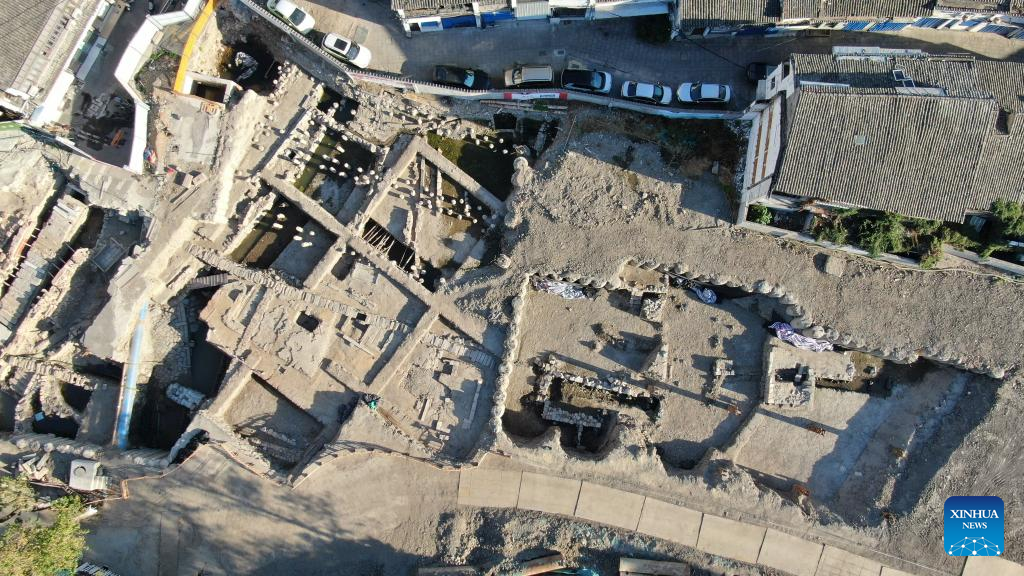
Aerial photo taken on Oct. 10, 2022 shows the ruins of an ancient dock at the archaeological site of Shuomen ancient port in Wenzhou, east China's Zhejiang Province. The archaeological site of Shuomen ancient port was discovered at the end of 2021, with ruins of ancient buildings, shipwrecks, and porcelain pieces unearthed in the following archaeological excavations. According to the National Cultural Heritage Administration, the discovery is important to studies of the ancient Maritime Silk Road. (Xinhua/Weng Xinyang) 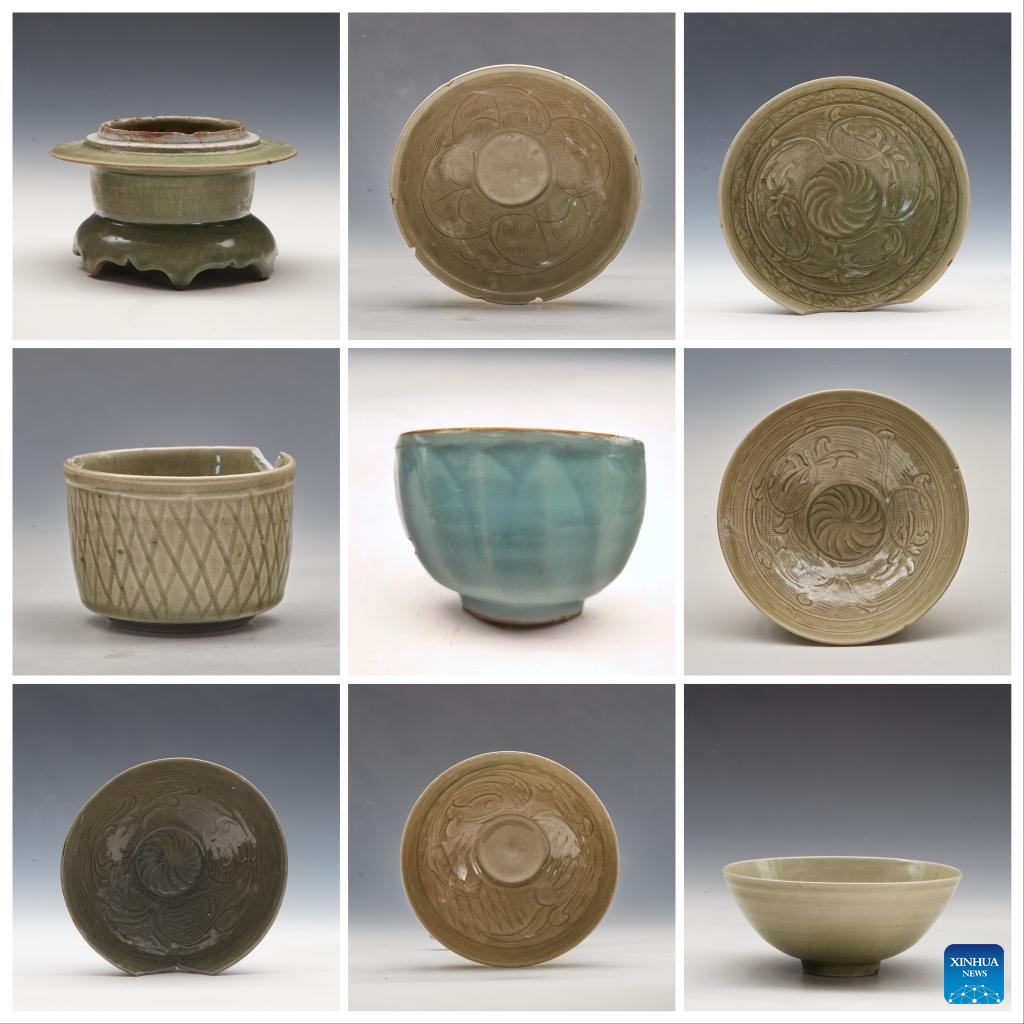
Undated combo photo shows porcelain wares discovered at the archaeological site of Shuomen ancient port in Wenzhou, east China's Zhejiang Province. The archaeological site of Shuomen ancient port was discovered at the end of 2021, with ruins of ancient buildings, shipwrecks, and porcelain pieces unearthed in the following archaeological excavations. According to the National Cultural Heritage Administration, the discovery is important to studies of the ancient Maritime Silk Road. (Xinhua) 
Aerial photo taken on Oct. 10, 2022 shows part of the archaeological site of Shuomen ancient port in Wenzhou, east China's Zhejiang Province. The archaeological site of Shuomen ancient port was discovered at the end of 2021, with ruins of ancient buildings, shipwrecks, and porcelain pieces unearthed in the following archaeological excavations. According to the National Cultural Heritage Administration, the discovery is important to studies of the ancient Maritime Silk Road. (Xinhua/Weng Xinyang) 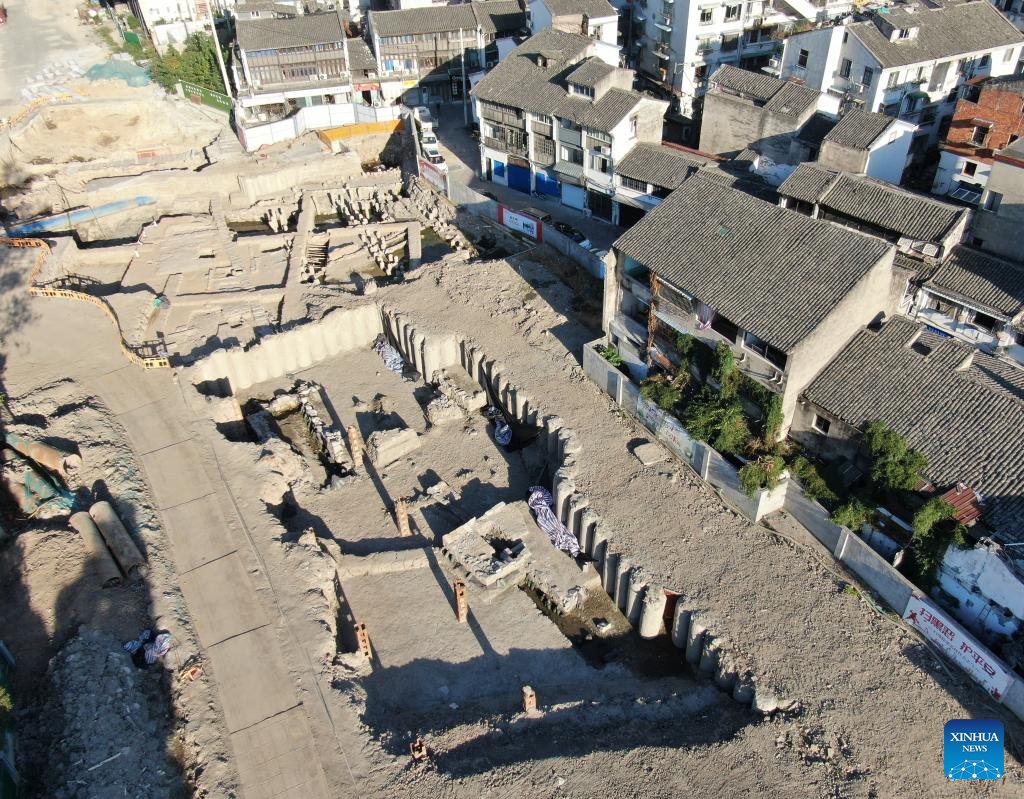
Aerial photo taken on Oct. 10, 2022 shows the ruins of an ancient dock at the archaeological site of Shuomen ancient port in Wenzhou, east China's Zhejiang Province. The archaeological site of Shuomen ancient port was discovered at the end of 2021, with ruins of ancient buildings, shipwrecks, and porcelain pieces unearthed in the following archaeological excavations. According to the National Cultural Heritage Administration, the discovery is important to studies of the ancient Maritime Silk Road. (Xinhua/Weng Xinyang) 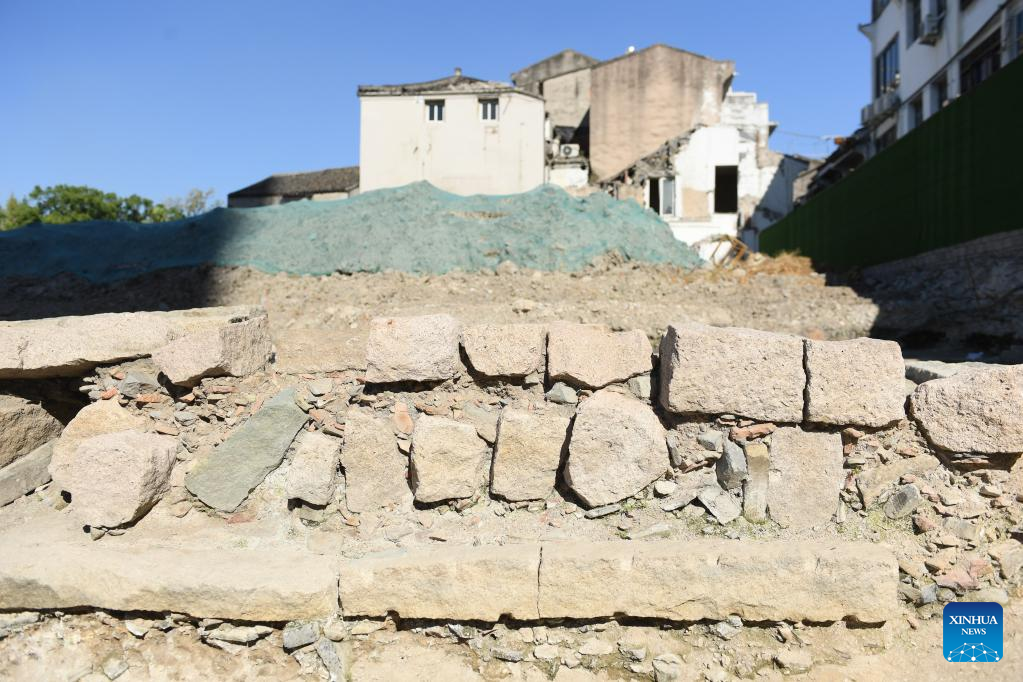
Photo taken on Oct. 10, 2022 shows ruins of buildings from different periods discovered at the archaeological site of Shuomen ancient port in Wenzhou, east China's Zhejiang Province. The archaeological site of Shuomen ancient port was discovered at the end of 2021, with ruins of ancient buildings, shipwrecks, and porcelain pieces unearthed in the following archaeological excavations. According to the National Cultural Heritage Administration, the discovery is important to studies of the ancient Maritime Silk Road. (Xinhua/Weng Xinyang) 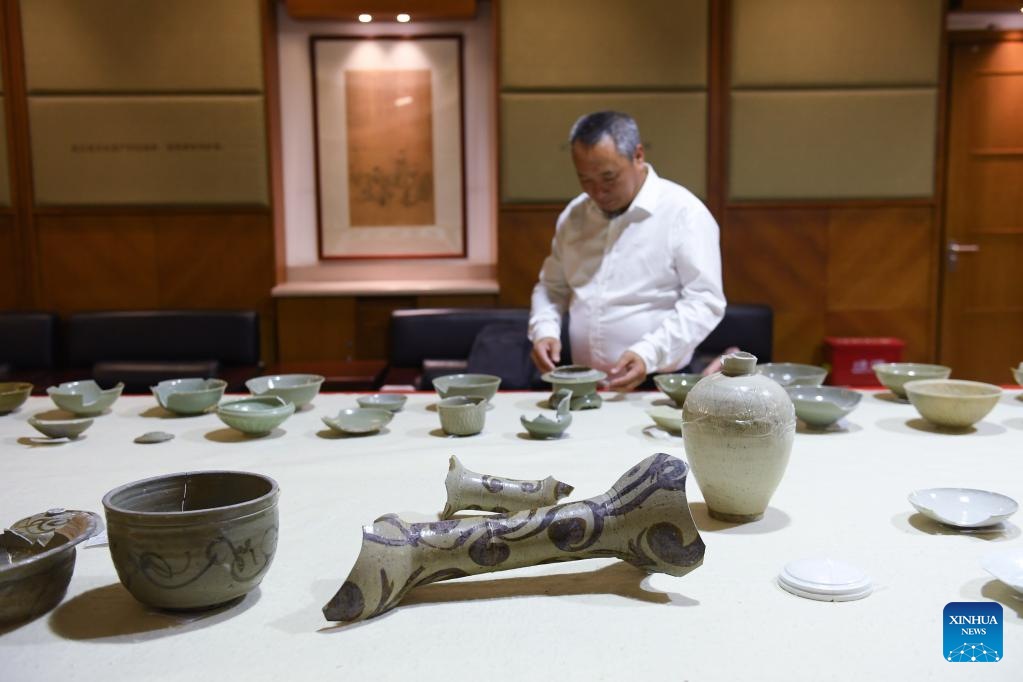
A researcher checks the ceramics discovered at the archaeological site of Shuomen ancient port in Wenzhou, east China's Zhejiang Province, Oct. 11, 2022. The archaeological site of Shuomen ancient port was discovered at the end of 2021, with ruins of ancient buildings, shipwrecks, and porcelain pieces unearthed in the following archaeological excavations. According to the National Cultural Heritage Administration, the discovery is important to studies of the ancient Maritime Silk Road. (Xinhua/Weng Xinyang) 
Undated combo photo shows porcelain wares discovered at the archaeological site of Shuomen ancient port in Wenzhou, east China's Zhejiang Province. The archaeological site of Shuomen ancient port was discovered at the end of 2021, with ruins of ancient buildings, shipwrecks, and porcelain pieces unearthed in the following archaeological excavations. According to the National Cultural Heritage Administration, the discovery is important to studies of the ancient Maritime Silk Road. (Xinhua) 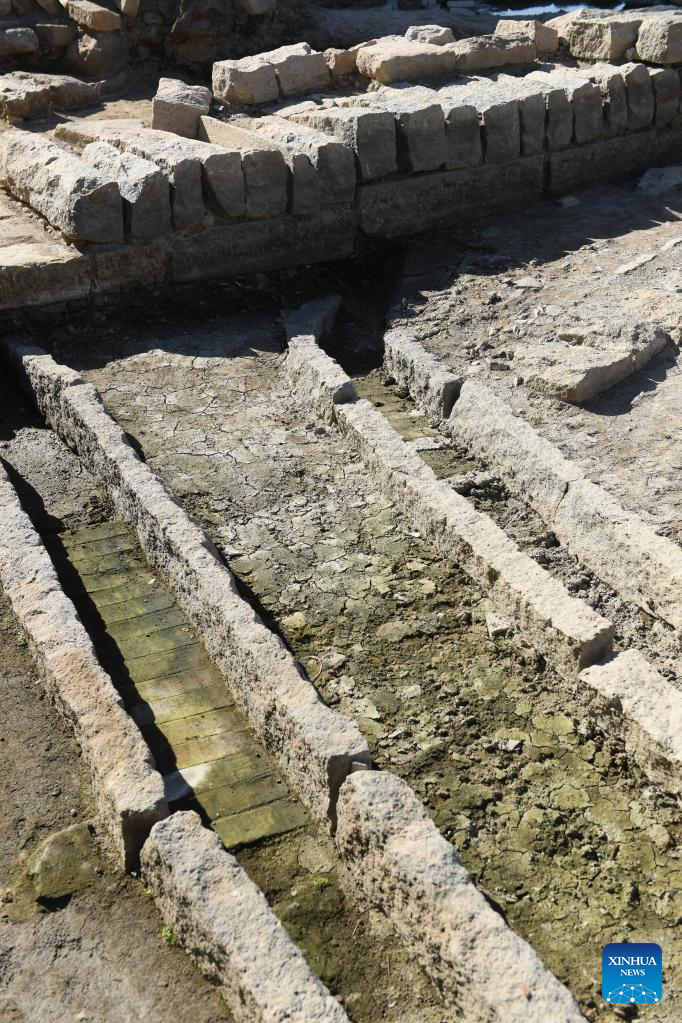
Aerial photo taken on Oct. 10, 2022 shows ancient ditches discovered at the archaeological site of Shuomen ancient port in Wenzhou, east China's Zhejiang Province. The archaeological site of Shuomen ancient port was discovered at the end of 2021, with ruins of ancient buildings, shipwrecks, and porcelain pieces unearthed in the following archaeological excavations. According to the National Cultural Heritage Administration, the discovery is important to studies of the ancient Maritime Silk Road. (Xinhua/Weng Xinyang) 
A staff member covers the foundation of an ancient building at the archaeological site of Shuomen ancient port in Wenzhou, east China's Zhejiang Province, Oct. 10, 2022. The archaeological site of Shuomen ancient port was discovered at the end of 2021, with ruins of ancient buildings, shipwrecks, and porcelain pieces unearthed in the following archaeological excavations. According to the National Cultural Heritage Administration, the discovery is important to studies of the ancient Maritime Silk Road. (Xinhua/Weng Xinyang) 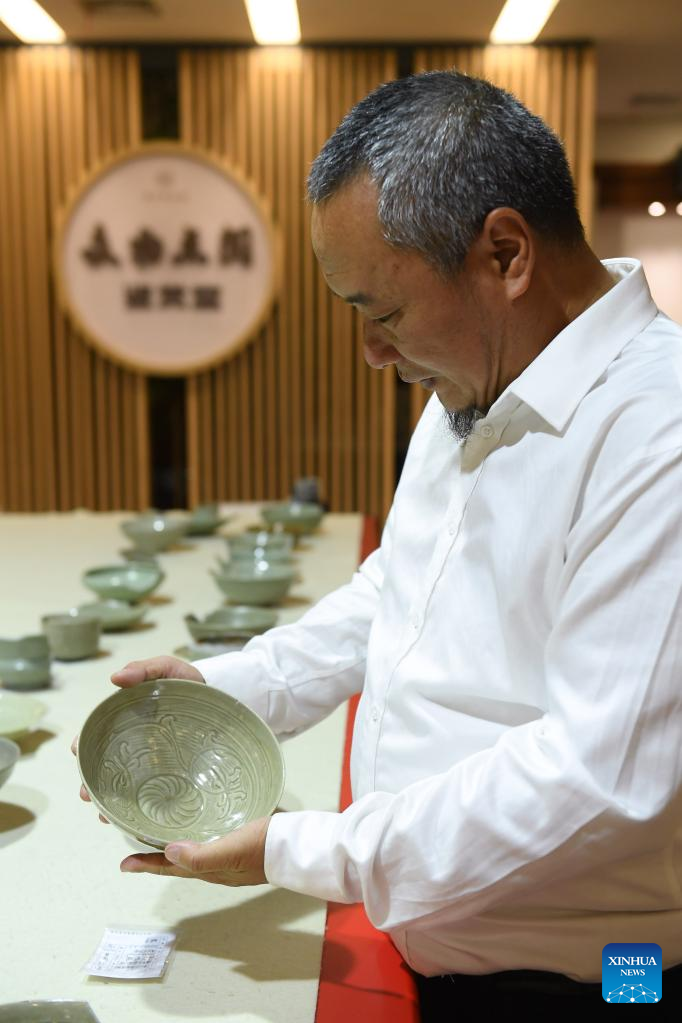
A researcher checks a Longquan celadon ware discovered at the archaeological site of Shuomen ancient port in Wenzhou, east China's Zhejiang Province, Oct. 11, 2022. The archaeological site of Shuomen ancient port was discovered at the end of 2021, with ruins of ancient buildings, shipwrecks, and porcelain pieces unearthed in the following archaeological excavations. According to the National Cultural Heritage Administration, the discovery is important to studies of the ancient Maritime Silk Road. (Xinhua/Weng Xinyang)
|